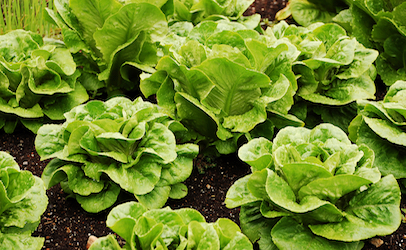Letter From The Editor: Romaine, Reform and Revive
OPINION
The purpose of the Food Safety and Modernization Act (FSMA) is the prevention of foodborne disease. We’ve invested billions of taxpayer dollars and thousands of years of Food and Drug Administration (FDA) professional time since 2011 to make that so.
When foodborne disease happens, FDA, the federal Centers for Disease Control and Prevention, and state health experts still must react. At the moment, those professionals are responding to the romaine-lettuce caused E. coli O157: H7 illnesses around the country.
 Public expectations arise whenever there is a severe outbreak of foodborne illness. They expect CDC and FDA to figure out the exact source. Taxpayers provide CDC and FDA with about $12 billion a year, and, yes, they think that entitles them on occasion to some timely answers.
Public expectations arise whenever there is a severe outbreak of foodborne illness. They expect CDC and FDA to figure out the exact source. Taxpayers provide CDC and FDA with about $12 billion a year, and, yes, they think that entitles them on occasion to some timely answers.
This is one of those occasions.
There’s no doubt CDC and FDA would like nothing better than to name the sources for all the illnesses caused by the last two romaine-related E. coli O157: H7 outbreaks.
Two?
Yes, two. Romaine caused 25 E. coli O157: H7 illnesses in 15 states between Nov. 4, 2017, and Dec. 17, 2017. The same outbreak was associated with another 42 illnesses in Canada.
Neither country found a common supplier, distributor or retailer of the contaminated romaine lettuce. The outbreak caused two deaths, one each in the U.S. and Canada. Twenty-six people in the two countries required hospitalization.
 The first romaine outbreak was over by Jan. 25, 2018, and it is not related to the current romaine outbreak, according to CDC. It’s just another in a long list of outbreaks involving leafy greens since 1995, many unsolved.
The first romaine outbreak was over by Jan. 25, 2018, and it is not related to the current romaine outbreak, according to CDC. It’s just another in a long list of outbreaks involving leafy greens since 1995, many unsolved.
CDC and FDA on Friday conducted a media teleconference to announce that romaine lettuce from Harrison Farm, located outside Yuma, AZ, caused eight of 98 confirmed cases of E. coli O157: H7.
The Yuma growing area is the likely source of the other 90 confirmed cases, but CDC and FDA cannot yet name any additional growers. Shipping and receiving records don’t tell the whole traceability story. There are not enough dots to connect.
Without more dots, we are not likely to see a romaine recall. We did not see a recall in the first romaine outbreak. By the time, CDC and FDA work from the ill person through each link in the supply chain back to the source, all the contaminated lettuce will likely be consumed.
At this point, however, the agencies cannot even confirm industry statements that no additional romaine is being harvested and shipped from the Yuma region.
The current outbreak is a severe one. No deaths yet, but more than half of those sickened have required hospitalization and ten people, including three children, have developed kidney failure.
The specific E. coli O157: H7 bacteria, known as “STX2 only” aggressively attacks blood vessels, kidneys, digestive system, and brain.
The specific E. coli O157: H7 bacteria, known as “STX2 only” aggressively attacks blood vessels, kidneys, digestive system, and brain.
 Restaurants do seem to be taking the outbreak seriously. Many are merely announcing caesar salads are off the menu until the romaine outbreak is over and they get the “all clear” sign.
Restaurants do seem to be taking the outbreak seriously. Many are merely announcing caesar salads are off the menu until the romaine outbreak is over and they get the “all clear” sign.
Growers in California and Arizona are not babes in the woods about all this. After the 2006 E. coli outbreak involving bagged spinach, growers and their major retail customers came up with Leafy Green Marketing Associations (LGMA) for the two states.
LGMA growers submit to both scheduled and announced audits by their state agriculture departments. LGMA membership has its advantages, such as being able to sell to those big retailers and cross the Canadian border without any delays.
Anyone looking for an example of an instance where private industry took action ahead of government to solve a problem would have to look at the LGMAs. They deserve credit, but they also deserve scrutiny.
Our understanding may not be complete or timely, but we are under certain impressions. LGMAs do not seem to be systems for helping CDC and FDA name the source of an outbreak. It strikes us that they should be more helpful.
In the recent rockmelon outbreak in Australia, the industry reacted in just the opposite way, demanding the government name the responsible grower. All the other rockmelon growers did not want their brands or export prospects hurt.
The LGMAs, with their reliance on state auditors, need to reexamine their role in solving outbreaks. If as we suspect, California romaine growers are all taking a hit now, maybe there’s room for improvement in the way the overall system works.
And, this brings us to a few final thoughts about the subject the industry hates–testing.
And we are not talking about testing and holding like the beef people. We understand perishables and all that. We are talking about testing.
Once not so long ago, we had a little unit called the Microbiological Data Program (MDP). Run by USDA, the MDP contracted with a dozen state agricultural labs to go out and test fresh produce.
In other words, the MDP sent the state ag labs out during the various harvest seasons to sample and test what’s coming out of the fields. The MDP existed from 2002-2012. It reached a point where it was responsible for 80 percent of the fresh produce testing in the U.S.
The MDP only cost taxpayers about $5 million. The New York Times called it “a tiny program that matters.” But the produce industry hated the MDP, and it apparently had a significant hand in killing it.
The MDP murder remains unsolved. Big produce did not like it because the testing occurred as fruits and vegetables were being picked and shipped. A positive MDP test could throw a wrench in the salad bowl. MDP did not have “predictive value,” according to the rap on it.
But MDP scored for consumers. It caught a rare strain of hepatitis A, preventing its entry into the U.S. from the Middle East and North Africa; and it kept a nasty parasite in Mexico from crossing into the U.S.
MDP was good at creating data on surges of fresh fruits and vegetables, either at harvest time or as from imports. FDA also tests fresh produce. It did about 20 percent of the testing back when MDP did 80 percent.
We have not a recent report, but we doubt that numerically FDA has come anywhere close to making up for MDP’s demise. When leafy green outbreaks occur now, our federal experts go into the field thin on data.
Let’s review. The romaine outbreak is very severe. It’s the second to occur the 2017-18 growing season. The first was deadly. No recalls have occurred. Progress is slow. The LGMAs may require reform to be more useful during outbreaks. And the public is missing the testing MDP contributed to food safety for a full decade.

No comments:
Post a Comment